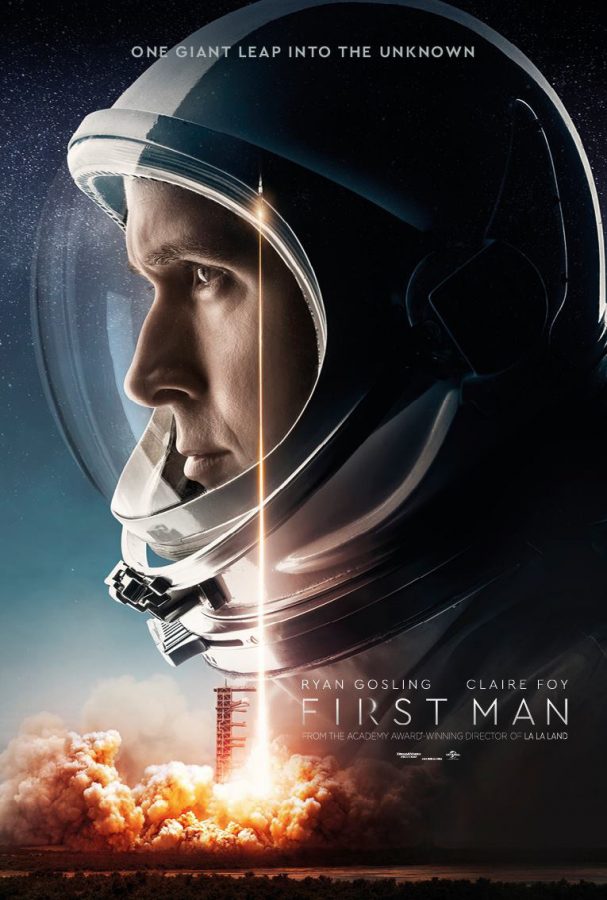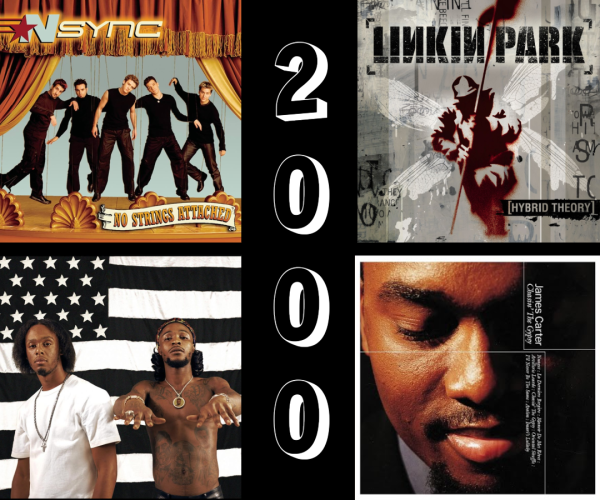First Man Review
DreamWorks and all related Liscenses
The Poster for “First Man”
Directed by Damien Chazelle, “First Man” is the biopic of Neil Armstrong and his career at NASA, ending with his famous mission to the moon. The movie stars Ryan Gosling as Armstrong in a film that in the end, is just as much a story of human spirit as it is about the Apollo space program.
Gosling’s portrayal of Armstrong is strong. As the protagonist struggles with the loss of his daughter and many of his friends, Armstrong’s emotional turmoil is clear to the audience. Gosling’s performance only emphasizes this, as many of his scenes are quiet, with little dialogue or exposition needed. It is his expressions and his attitudes that guide the audience through what he must be thinking.
However, the real star of the show is Claire Foy in her role as Janet Armstrong. Foy’s performance is remarkable. Foy reminds the audience that every figure immortalized in history has a human side and that those figures can make mistakes. Janet Armstrong must keep her family together and deal with the trauma of losing a family member, often times without any help. She cannot invest herself in her work like her husband, and instead must watch and wait while he endures the perils of space flight.
“First Man’s” portrayals of space flight are some of the most accurate put to film. Chazelle’s choice to use tight camera angles gives the audience the claustrophobic feeling of being inside a space capsule. Additionally, the exterior shots of the spacecraft are filmed in such a way as to suggest the camera is mounted to the crafts themselves. These aspects immerse the audience during the sequences of space flight, to the likes of which I haven’t seen before.
Additionally, Justin Hurwitz’s score is superb. The composer’s choice to include some softer, almost classical themes is certainly unique, and the audience can hear these themes crescendo during the most dramatic scenes, with space-opera like orchestra, but then fall quite rapidly to drive home the important points. Chazelle uses silence to its fullest extent as well in the film. When Neil walks on the moon, the audience hears nothing aside from his breathing. This silence is tangible, and not only does it add to the grandeur and significance of the moment, but it reminds the audience of Armstrong’s emotional toil to get to this moment.
“First Man” drew criticism for its choice to exclude the planting of the American flag in the film. To me, however, this concern seems undue. Throughout the film, there are plenty of U.S. flags and symbols, reminding the audience it was the Americans who send Apollo 11 into space. The Saturn V rocket, used to launch the crew from orbit, bears the markings and emblems of the United States, all the astronauts have the flag on their spacesuits, and Foy’s character raises the American flag outside of her house. Additionally, while we do see the American flag on the moon, the scene of the astronauts planting the flag would severely undercut the importance of two arguably more important scenes, the first step on the moon, as well as an emotional moment Neil has remembering his daughter.
Most importantly, something that the film doesn’t quite touch on is that while Americans were the first to land on the moon, the vision of space exploration is a wholly human endeavour, and the dream of exploring the stars is something that can unite all of us, if we choose to let it.
Your donation will support the student journalists of Fairview High School - CO. Your contribution will allow us to purchase equipment and cover our annual website hosting costs.

Henry loves telling stories. Mainly, that means he produces podcasts, which you can check out here. When he isn't doing something related to journalism,...











